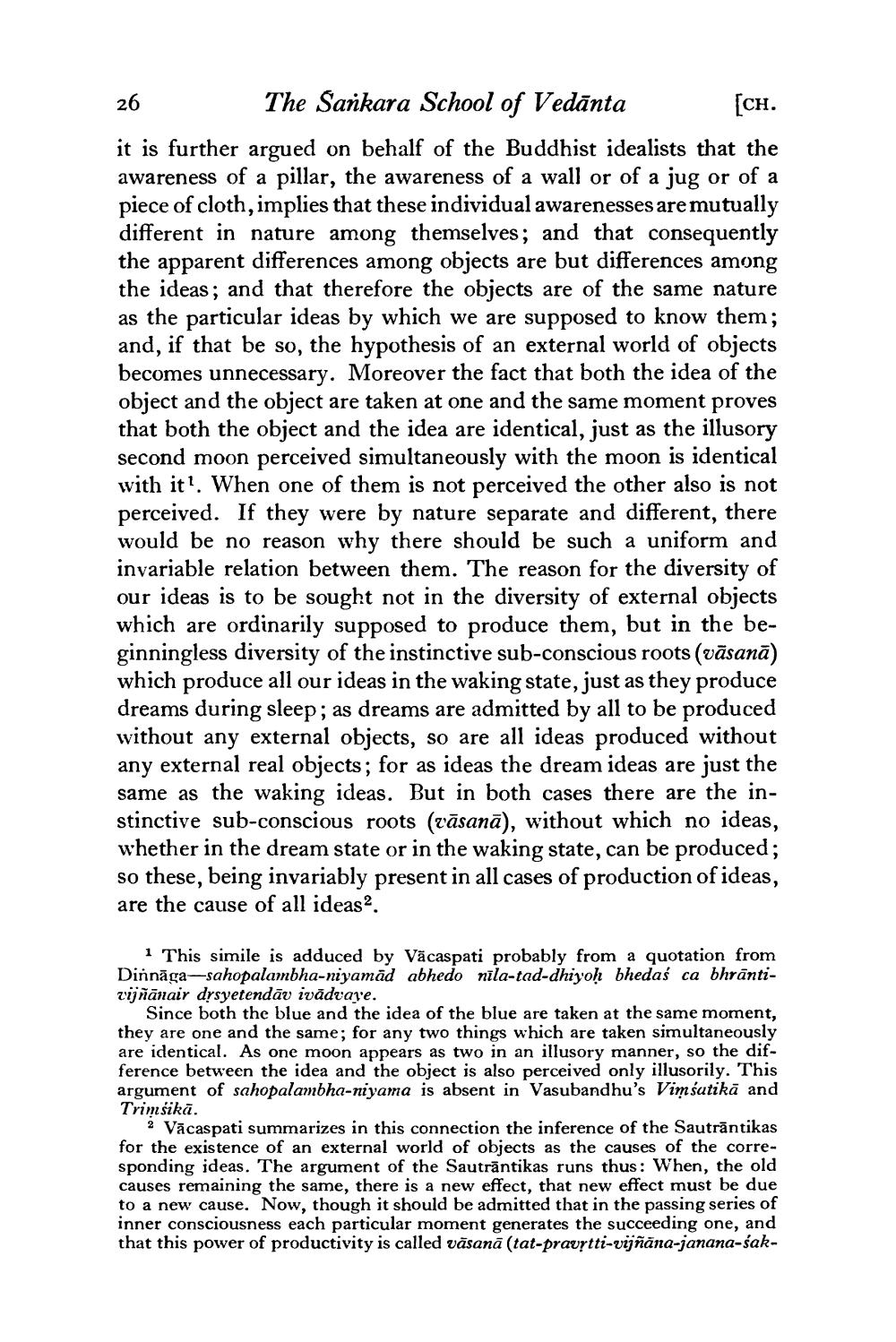________________
26
The Sankara School of Vedanta
[CH.
it is further argued on behalf of the Buddhist idealists that the awareness of a pillar, the awareness of a wall or of a jug or of a piece of cloth, implies that these individual awarenesses are mutually different in nature among themselves; and that consequently the apparent differences among objects are but differences among the ideas; and that therefore the objects are of the same nature as the particular ideas by which we are supposed to know them; and, if that be so, the hypothesis of an external world of objects becomes unnecessary. Moreover the fact that both the idea of the object and the object are taken at one and the same moment proves that both the object and the idea are identical, just as the illusory second moon perceived simultaneously with the moon is identical with it. When one of them is not perceived the other also is not perceived. If they were by nature separate and different, there would be no reason why there should be such a uniform and invariable relation between them. The reason for the diversity of our ideas is to be sought not in the diversity of external objects which are ordinarily supposed to produce them, but in the beginningless diversity of the instinctive sub-conscious roots (vāsanā) which produce all our ideas in the waking state, just as they produce dreams during sleep; as dreams are admitted by all to be produced without any external objects, so are all ideas produced without any external real objects; for as ideas the dream ideas are just the same as the waking ideas. But in both cases there are the instinctive sub-conscious roots (vāsanā), without which no ideas, whether in the dream state or in the waking state, can be produced; so these, being invariably present in all cases of production of ideas, are the cause of all ideas2.
1 This simile is adduced by Vacaspati probably from a quotation from Dinnaga-sahopalambha-niyamad abhedo nila-tad-dhiyoh bhedas ca bhrāntivijñānair drsyetendav ivadvaye.
Since both the blue and the idea of the blue are taken at the same moment, they are one and the same; for any two things which are taken simultaneously are identical. As one moon appears as two in an illusory manner, so the difference between the idea and the object is also perceived only illusorily. This argument of sahopalambha-niyama is absent in Vasubandhu's Vimśatika and
Trimšikā.
2 Vacaspati summarizes in this connection the inference of the Sautrāntikas for the existence of an external world of objects as the causes of the corresponding ideas. The argument of the Sautrāntikas runs thus: When, the old causes remaining the same, there is a new effect, that new effect must be due to a new cause. Now, though it should be admitted that in the passing series of inner consciousness each particular moment generates the succeeding one, and that this power of productivity is called vāsanā (tat-pravṛtti-vijñāna-janana-śak




